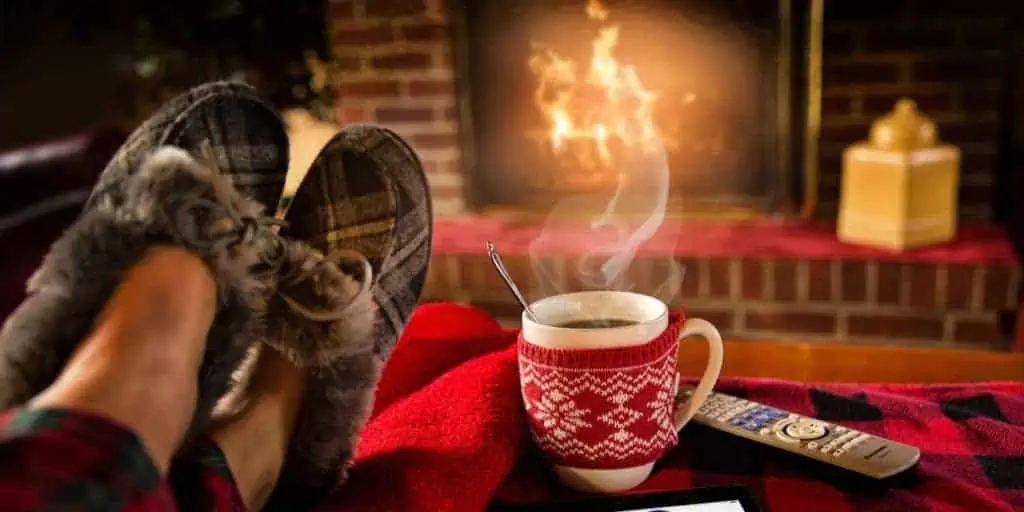Winters here in Vancouver, BC – and across Canada – generally involve cozy days inside, hot chocolate, and holiday time with the family.
But the season can also lead to pricey heating bills for anyone who doesn’t know the best strategies for conserving heat. As living costs go up, saving a little bit every month on residential heating costs can make a difference, even if it’s something as simple as having a little bit of extra cash to treat yourself.
So, this winter, don’t let expensive heating costs get the better of you — our experts have shared their best free, low-cost, and long-term ways to save on heating costs this winter and beyond.
Free ways to save on heating
Leave your blinds and curtains open on sunny days
This may seem like a simple tip, but the sun is still powerful and warm in the winter.
If it’s a sunny day, an efficient and free way to trap heat in your home is to leave the curtains and blinds open during the day.
The warmth from the sunlight will stay and warm your home well into the evening. This helps to give your heating system a break when you are out of the house during the day.
Wear more layers of clothing
It’s simple. Everyone knows about it. But it’s still true and 100% effective.
Even turning the heat down by 1-2 degrees can save 5% of your heating bill. Turn the thermostat down and get cozy with blankets and an extra sweater instead!
Buttoned or zippered garments are especially great choices. Not only do you get an extra layer of heat-trapping insulation, but you can also manage your personal comfort more readily. You can wear them closed, half open, fully open, and – if you find yourself somewhere warmer – it’s still easy to remove them so you don’t overheat.
Low-cost ways to save on heating
Insulate your water pipes
This is something that can typically be done with inexpensive materials as a DIY project. Even better, it’s a two-birds-with-one-stone strategy, as insulating your pipes can help you save money in multiple ways.
The direct benefit is preventing heat loss as water travels through your home’s plumbing. Since the water loses less heat, your hot water heating system won’t need to expend as much energy bringing water up to extra-high temperatures to offset the heat loss from traveling through cold pipes.
Beyond that, keeping your pipes insulated helps to prevent them from freezing. When the water inside pipes freezes, it expands and can end up causing cracks. A burst pipe due to freezing can be costly to fix.
Seal your windows
Most modern homes have double-paned windows. However, glass isn’t the best material for heat retention, so it’s important to carefully inspect your windows and doors for drafty areas.
An easy way to do this is to light a small candle and place it on your windowsill or near your door. If it flickers intensely, there is likely air coming in from the outside. For windows, caulking can help to seal drafts around the frame, while for doors – depending on where the gaps are – you’ll be looking at caulking or weather stripping.
If you feel that your windows need further insulation, there are many hardware stores that carry insulating window film as well. This type of window film can work to keep heat in by providing an extra barrier that sits against the glass. As an added bonus, it’s also useful in the summer for keeping the home cool and moderating internal temperatures.
Use a space heater
If you have a smaller home, or you have a larger home but spend most of your time in a particular room, using a space heater – which typically costs between $100 to $200 – can help you save a significant amount of money.
The idea is to focus on heating the space that you’re in, not your entire home. Unless you’re in a very small home, you probably won’t turn off the heat entirely, but you can set the thermostat to a much lower temperature so that you aren’t heating rooms and spaces that people aren’t using.
For example, if you’re working from home, you might set up your workspace in a small room, place the space heater there, and then turn down your home’s main thermostat during the workday. It’s best to keep the door closed to trap the heat in the room as well.
Then, about half an hour before your day ends (or the kids come back from school), you’d turn the thermostat up so that your other living spaces are comfortable again during the evening. That’s all there is to it — hours of heat savings with barely any extra effort.
Long-term ways to save on heating
Upgrade to a smart or programmable thermostat
Your home’s heating system doesn’t need to be on at all hours of the day. With a programmable thermostat, you can automate your home’s heating so that it’s operating at different temperatures while you’re sleeping or out of the house.
“Smart” functionality lets you create automated schedules so that you can reduce your heating costs without really noticing the difference.
You can set up a routine that maintains a lower temperature overnight or while your family is out of the house for work and school. Shortly before people are using the home again, the system will automatically bring the temperature back up to whatever temperature you prefer.
Suppose that you sleep for 7 hours and your daily working hours and commute keep you away from home for another 9 hours each day. Even if you allocate 1 hour of “warm up” time for your house to get back up to a comfortable temperature, that’s 15 hours of reduced heating usage on each winter workday, which can add up to major savings on heating costs.
Invest in a more energy-efficient heating system
If you plan to stay in your current home for many years, and it currently has an older furnace or boiler system, upgrading to an energy-efficient model can help you reduce your heating costs in the long run.
Yes, it typically costs several thousands of dollars to complete a home heating system upgrade, but you’ll offset your upgrade costs over time with the increased efficiency.
Not only that, you’ll likely find that your home is quieter and more comfortable, as newer systems are typically more powerful and mindful about quiet operation.
But remember: this option only makes sense if you’re committed to your home in the long term. It can take 5-6 years for your energy savings to offset the cost of the upgrade — that’s okay if you plan on living there for decades, but might make less sense if you have your eye on moving to another home in just a few years.
Wondering about your options for a heating upgrade?
Hillcrest Plumbing & Heating has been servicing the residents of Vancouver and the Lower Mainland for over 50 years.
Our dedicated team is committed to helping you save money, whether you need maintenance work, appliance replacement or you simply have questions about how you can prepare your home for the winter, call us or come in today. If you’re experiencing a plumbing or heating emergency, we offer 24/7 emergency services as well.

